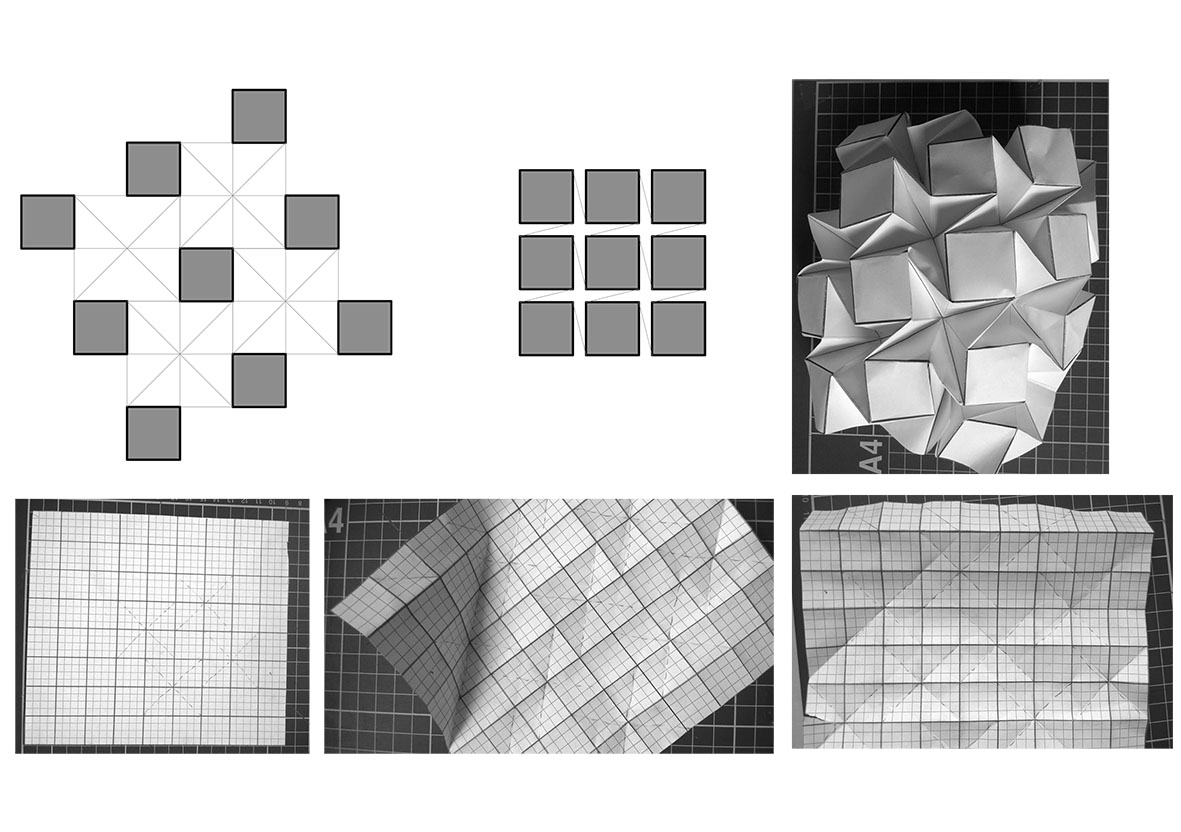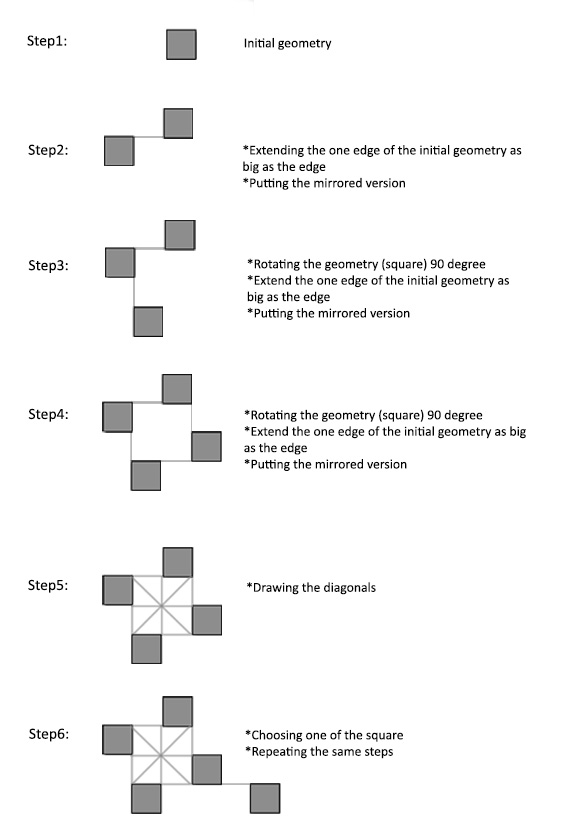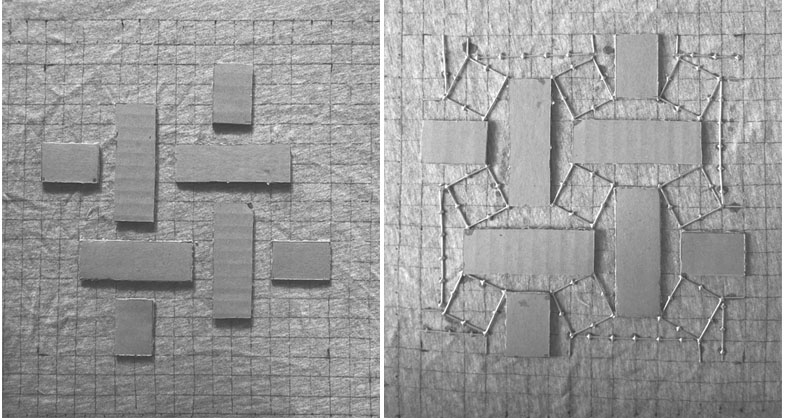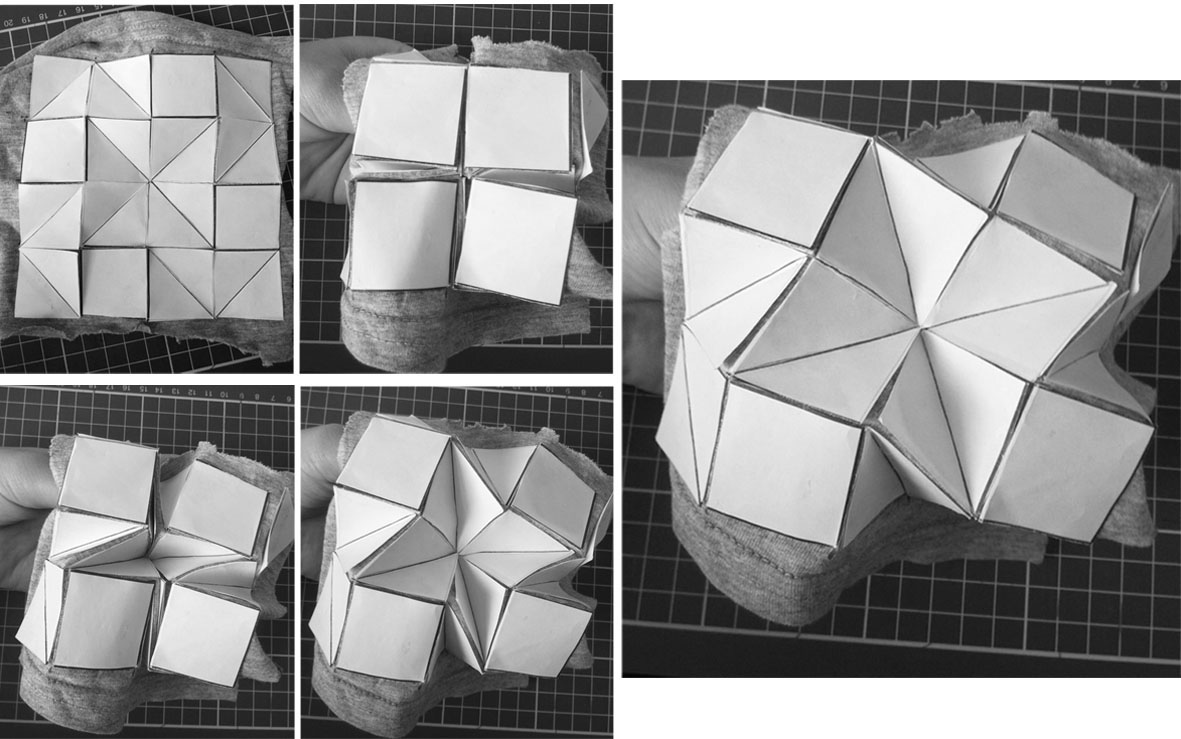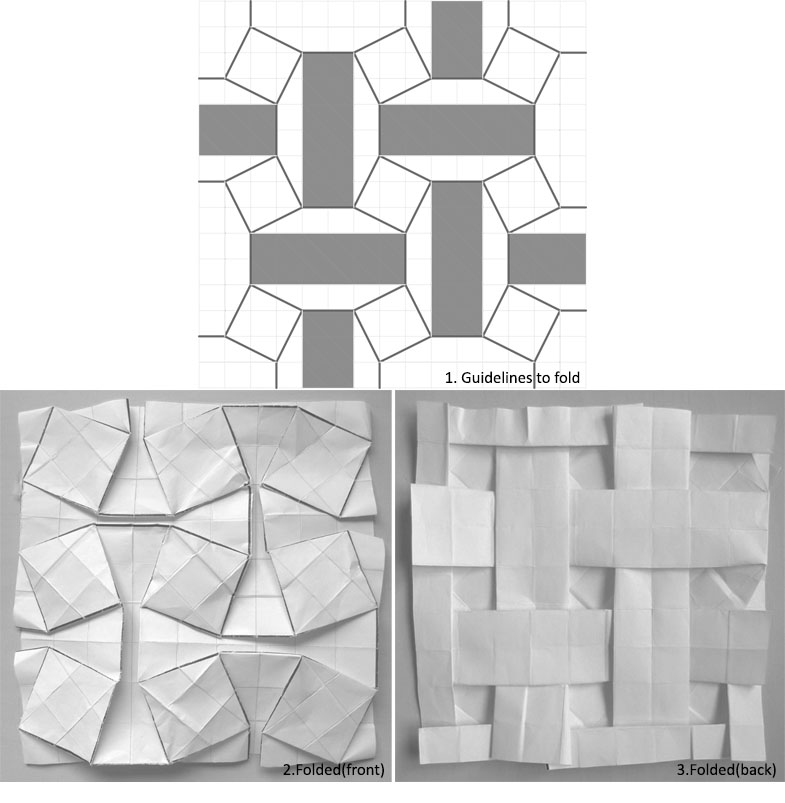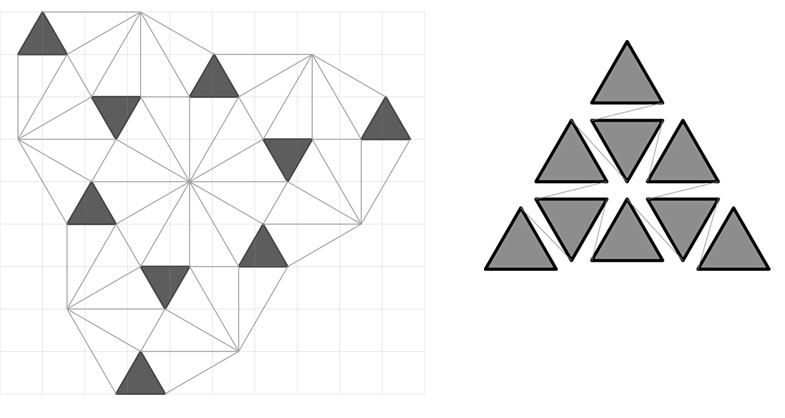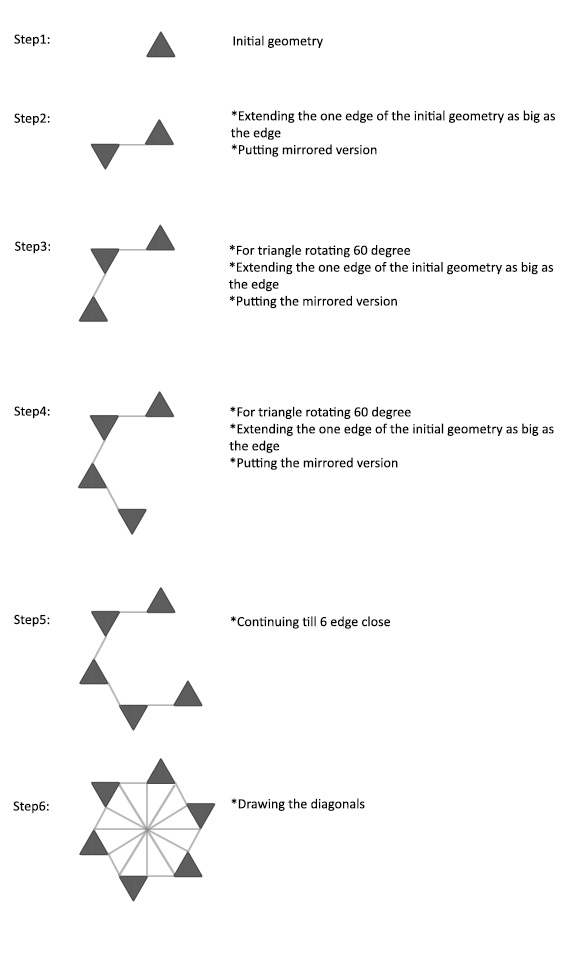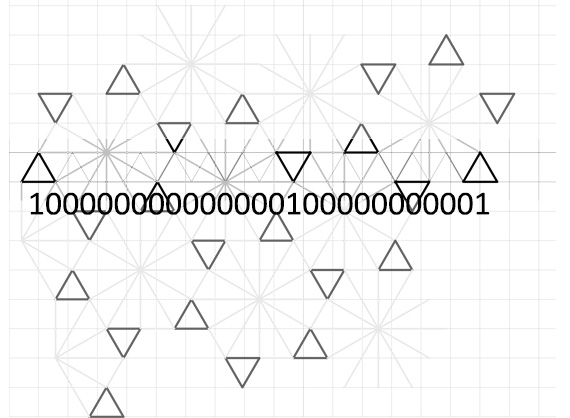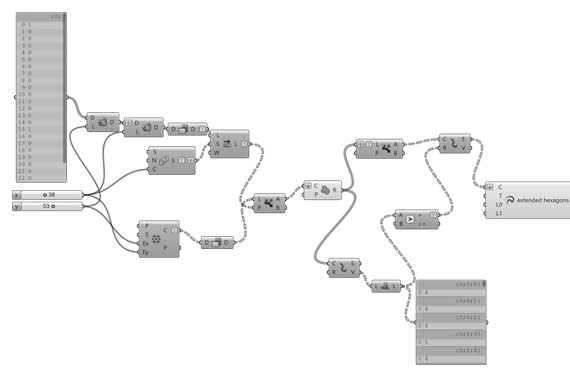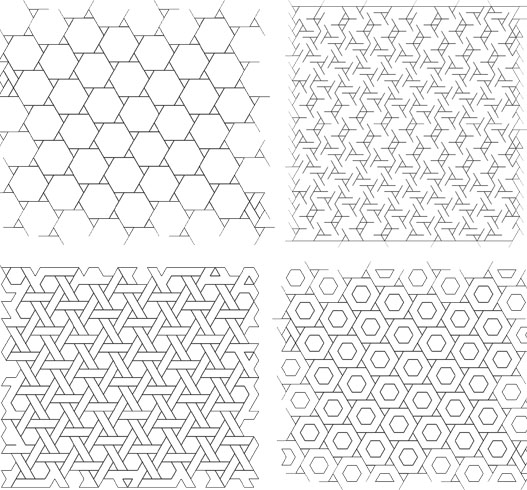No edit summary |
No edit summary |
||
| Line 57: | Line 57: | ||
''In my experiment I figured out there could be two ways to create the selected origami pattern, one of them is explained at the top (both for square and triangle), and the second one can be placing a triangular grid and picking the triangles according to the aimed pattern. After this part the experiment mostly focuses on the second option which is more applicable with selected software.'' | ''In my experiment I figured out that there could be two ways to create the selected origami pattern, one of them is explained at the top (both for square and triangle), and the second one can be placing a triangular grid and picking the triangles according to the aimed pattern. After this part the experiment mostly focuses on the second option which is more applicable with selected software.'' | ||
[[File:zeroone02.jpg]] | [[File:zeroone02.jpg]] | ||
Revision as of 13:05, 7 April 2015
Meryem Kubra Uluc
Github
My github repo is here
Origami Pattern De-Code and Producing Experiment With Fabric
Initial analysis of square pattern
Pattern Creation Step by Step
For Square Pattern
Possible Variations Experiment with Fabric
Target of the Experiment
In the art of origami the paper has two different characteristics, some parts are softer other parts that are transporting the forces are harder. Starting from this logic in this project it is aimed to change the quality of the fabric by introducing new materials to the fabric surface. So that we can produce different qualities on the fabric surface.
Firstly I started with gluing cardboard and metal sticks on the surface according to one selected pattern. Since the material is not flexible enough to give the easy movement the experiment did not give the clear results.
Fabric & Cardboard & Metal
For the second experiment I select relatively less complicated pattern to test with paper and fabric. I applied the pattern on the fabric and fold step by step. As a result i find out fabric is working with paper better than cardboard and metal wires. It is easy to fold and the traces of the folded pattern gives clues for the second-third folding
As a result producing Origami tessellations by fabric is not as easy as paper producing. I wanted to put this tessellations as an inspirational examples that paper folding that I produced as a comparison between AtlasBindung-Körperbindung and other kind of binding variations.
Pattern Analysis and Variations with Grasshopper
Initial pattern
Pattern Creation Step by Step
For Triangular Pattern
In my experiment I figured out that there could be two ways to create the selected origami pattern, one of them is explained at the top (both for square and triangle), and the second one can be placing a triangular grid and picking the triangles according to the aimed pattern. After this part the experiment mostly focuses on the second option which is more applicable with selected software.
- In order to produce the pattern firstly there should be triangular grid as a reference(at the background).
- According to pattern we wish we are creating a pattern with 0 and 1 (meaning pick or not pick)
- This pattern as a list is being an input for the “repeat the data” command tiling in x and y direction
- Since there is shift in every line the list will be shifted in every step 7 times
- The created (shifted list) and existing triangular grid dispatched and the obtained curves united
- To differentiate the inner and outer curves(frame) there is a small mathematical rule (if the number of vertices bigger than 5 take it or dont take it) applied.
- As a result curves are being connected.
Variations:
- Firstly having the
- The background grid consists of 3 different grid in order to locate triangles and create several sets that will contain the triangles (picked_means 1_ and not picked_means 0_)
- Combination of the 3 different triangular grid gives as output sets which will be input for the dispatch command.
- Dispatching 2 times gives different 4 sets
- The patterns are created by changing the sets as inputs from A to B. That shows with the same code it is possible to create different patterns by changing the input list and shift value in series component.
